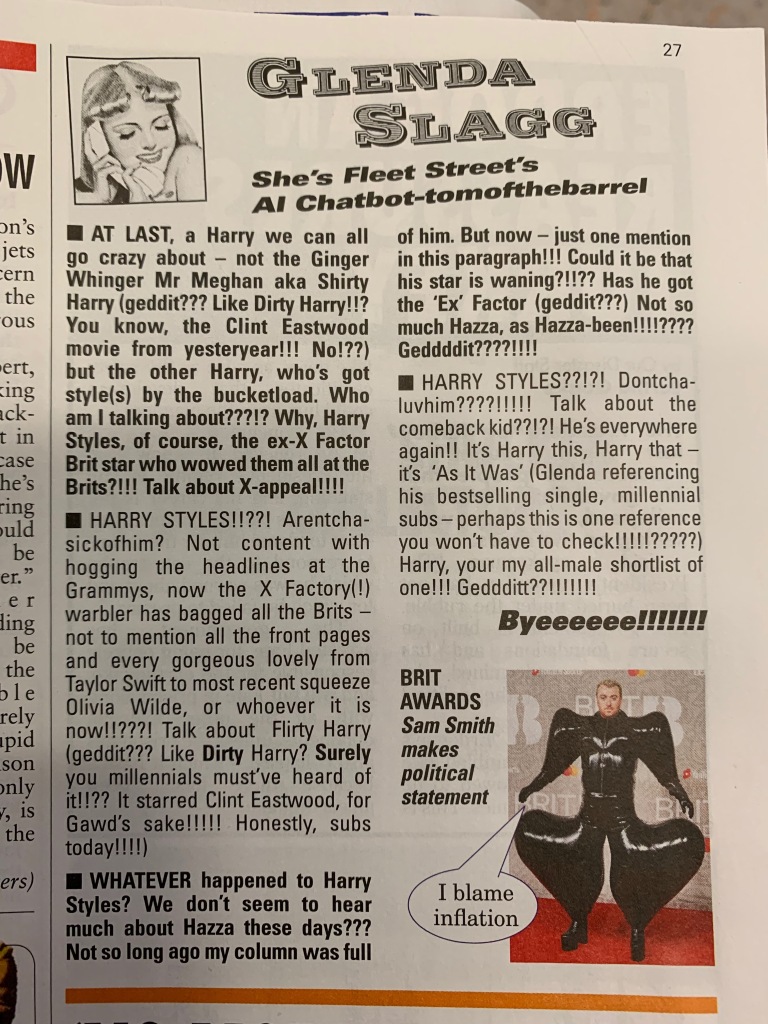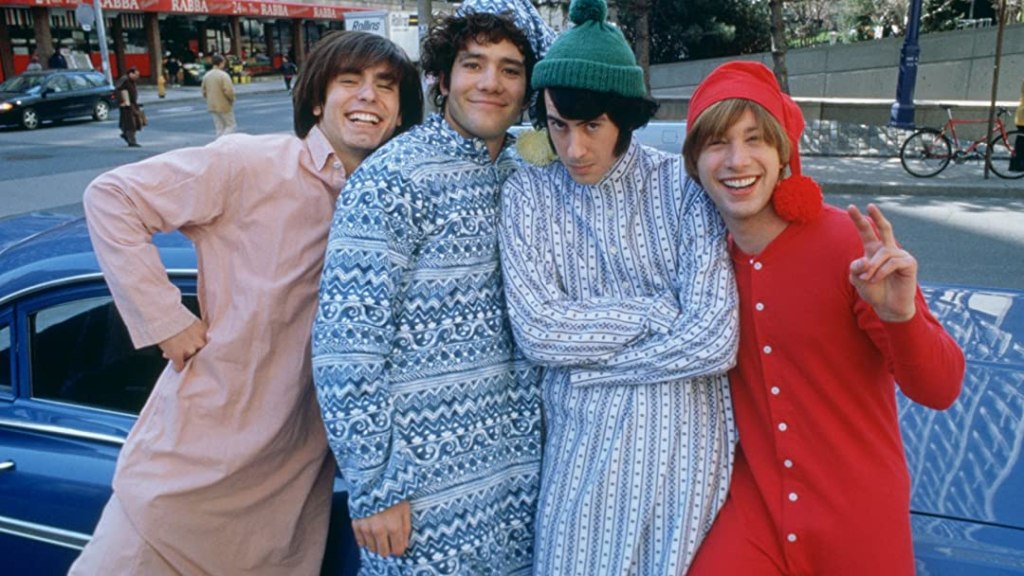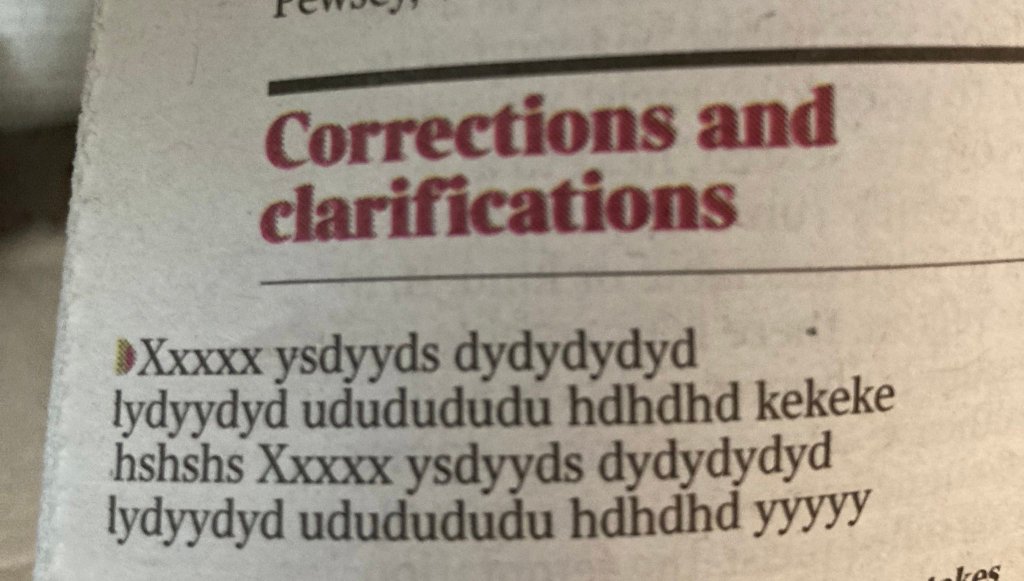It appears even Glenda is having a bit of trouble with her subeditors this week:

But it’s hard to decide which is more unlikely: that a mere member of the copy desk would criticise the work of one of Fleet Street’s brightest stars, or that a subeditor – who, as a group, shall we say, tend to be a little older than their colleagues – wouldn’t understand a reference to a 1970s film (really, any 1970s film).
Columnists are not, as a rule, inclined to have production functionaries overrule their jeux d’esprits; they are more lightly edited than any other writer, because the quality of their prose is what’s earned them the job, for gawd’s sake???! There is a presumptive hands-off rule for several star writers at the Tribune (not one that I agree with – it is this blog’s position that everyone should be edited, sensitively, and that silly mistakes just spoil a joke), and in any case it would be for the columnist, not the subeditor, to decide what references were culturally salient.
Given the international decline in copy desks, one might be tempted to say that there are no millennial subeditors anyway. That would not be true at the Tribune, which still proudly invests in subs and as a result has a desk that ranges in age by almost 50 years – ideal, in theory, for catching almost any generation-specific error that might elude a colleague. It’s just that the younger ones have the good sense, by and large, to work on the website, in social media and in video – channels that may still offer them employment into the future – and leave a group of increasingly grizzled Gen X-ers to grow old with the paper.
However, that didn’t stop this headline appearing on the website:

A cultural reference to The Life of Brian? Hard to believe a boomer didn’t write that: you’d need to be in your 60s (NOTE: or not – see comments) to have seen that the first time round at the cinema. Maybe Glenda is right: maybe 1970s films are a universal frame of reference that speak to all generations, in which case I’m in prime position to capitalise.
Or has this reference just sailed over the heads of most of our younger online audience, because it’s just too “old”? I don’t if know I feel lucky, or whether I’ve got a bad feeling about this.





























